Today we learn about one of the most used distributions in all of probability and statistics: the Normal Distribution.
The full truth of this statement will become clearer as we proceed.
Some Places You Might See Normal Distributions
Biology: sizes, heights, weights within a species (from trees to humans). Blood pressure in human adults.
Manufacturing: sizes and weights of mass produced items (diameter sizes of ball bearings, the amount of liquid in a can of soda, the weight of a package of oreos). Measurement errors in all of the above.
Social Sciences: Test scores (IQ, ACT/SAT).
Various: Yearly precipitation in certain parts of the world, the position of a particle that experiences diffusion.
This is all to say that normal distributions are EVERYWHERE!
Normal Distribution Basics: The normal distribution is a symmetric, bell-shaped distribution.

Example
Suppose we randomly sample from the population of women aged $20$ to $29$ and measure their height, and record the data in a histogram.
The Big Idea
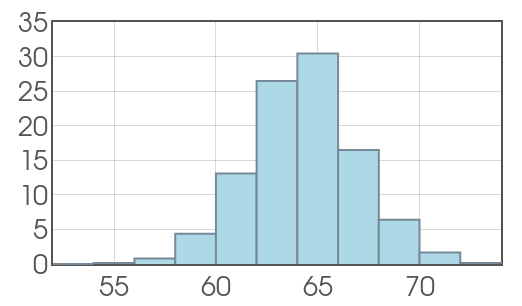

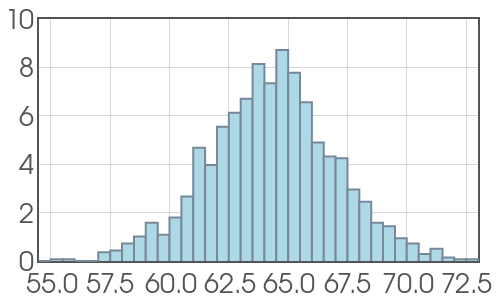
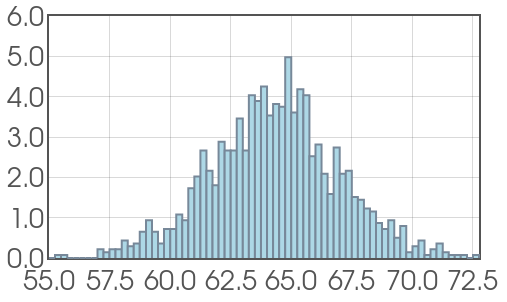
Probability Density Curves

Probability Density Curves
Idea: Suppose we want to estimate the probability that a randomly chosen young woman's height will fall between $68$ and $70$ inches. We could do it using our data.

Probability Density Curves
OR we could compute the probability with our probability density curve.
 | $\longrightarrow$ | 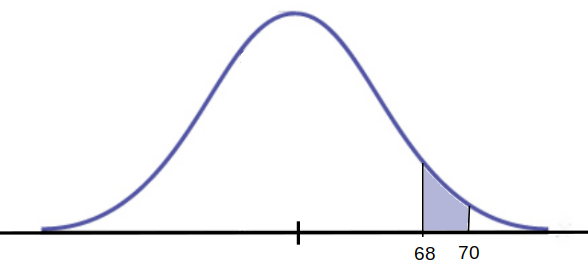 |
Density Curve Basics
Question: If we added up all the percentages of the bars of our histogram, what percentage should we end up with?

Density Curve Basics
The total area under any Probability Density Curve is $1.$ This may be interpreted as $100\%$ of our data is represented by the curve's area.
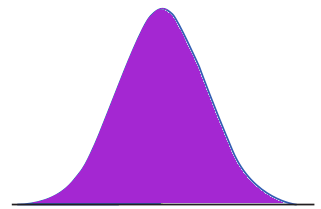
Normal Distribution Basics
Every normal distribution is determined by two numbers: the mean $\mu$, and the standard deviation $\sigma$.

$\mu$ tells us where the center of our distribution is.
$\sigma$ tells us how wide, or "spread out," the distribution is.
Normal Distribution Basics: Examples of Normal Distributions

A normal distribution with mean $\mu$ and standard deviation $\sigma$ is denoted as $$N(\mu,\sigma).$$
Normal Distribution Basics: The $68\mbox{-}95\mbox{-}99.7$ Rule
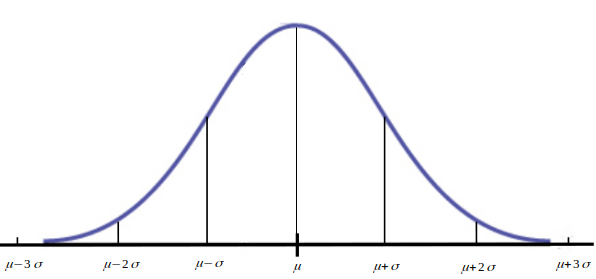
About $68\%$ of observations lie within $1$ standard deviation of the mean.
About $95\%$ of observations lie within $2$ standard deviations of the mean.
About $99.7\%$ of observations lie within $3$ standard deviations of the mean.
Normal Distribution Basics: The $68\mbox{-}95\mbox{-}99.7$ Rule


Example: Iowa Test Scores. The Iowa Assessments are standardized tests provided as a service to schools by of the University of Iowa.
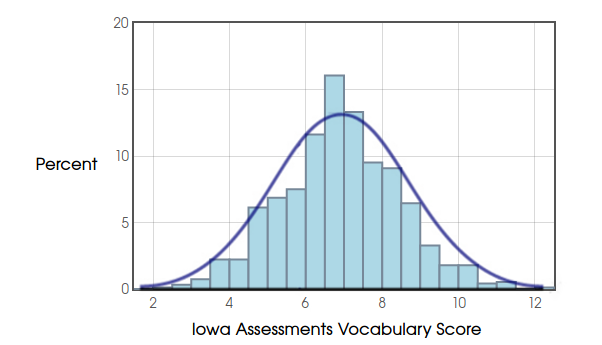
Example: Iowa Test Scores.

Example: Iowa Test Scores & The $68\mbox{-}95\mbox{-}99.7$ Rule
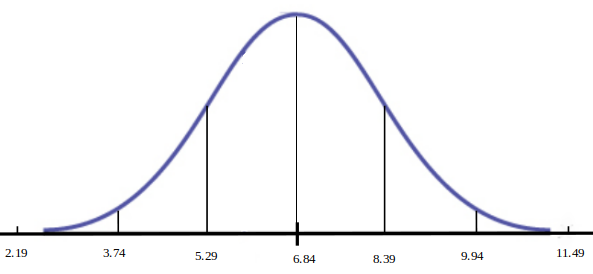
Example: Iowa Test Scores
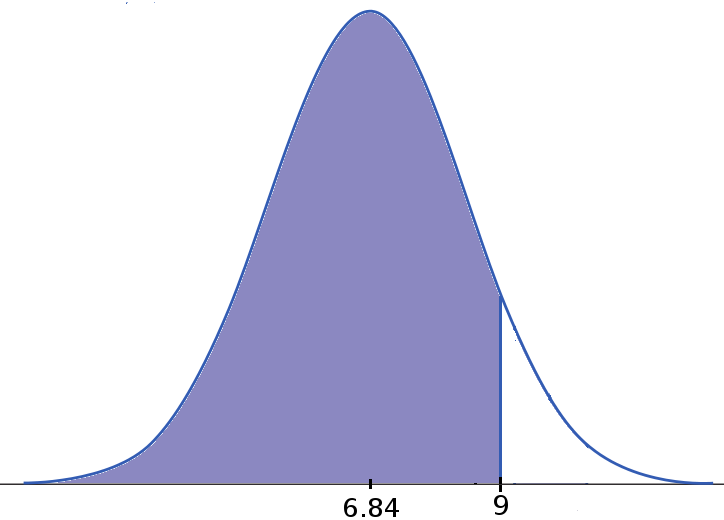
For a normal distribution $N(\mu, \sigma),$ use the following guide to find the cumulative area:
- Compute the value $z=\displaystyle \frac{x-\mu}{\sigma}$ where $x$ is your data point.
- Find the value of $z$ in this table.
- The number corresponding to this value of $z$ is the cumulative area.
Example: Iowa Test Scores. To find $\mbox{Cumulative Area below 9}...$
 | $\displaystyle \longrightarrow$ |  |
| Original: $N(6.84,1.55)$ | Standard Normal $N(0,1)$ |
Example: Iowa Test Scores.
 | $\displaystyle \longrightarrow$ |  |
| Original: $N(6.84,1.55)$ | Standard Normal $N(0,1)$ |
Thus, $91.77\%$ of students scored below $9$ on the Iowa Vocabulary Test.
Put another way, the probability that a randomly chosen student scores $9$ or below is $0.9177.$
Example: Iowa Test Scores
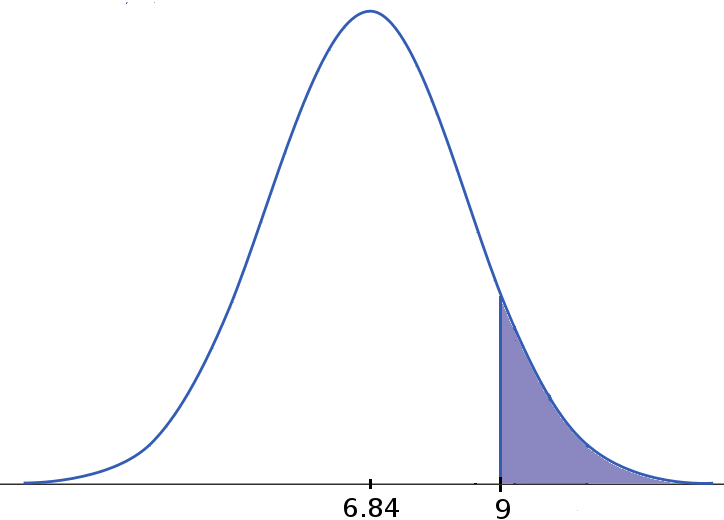
$\begin{array}{l}
\mbox{Cumulative Area Above 9}\\
=1-\mbox{Cumulative Area Below 9}\\
\approx 1-0.9177\\
= 0.0823
\end{array}
$
So about $8.23\%$ of students scored above $9$ on the Iowa Vocabulary Test.
So about $8.23\%$ of students scored above $9$ on the Iowa Vocabulary Test.
Example: Iowa Test Scores
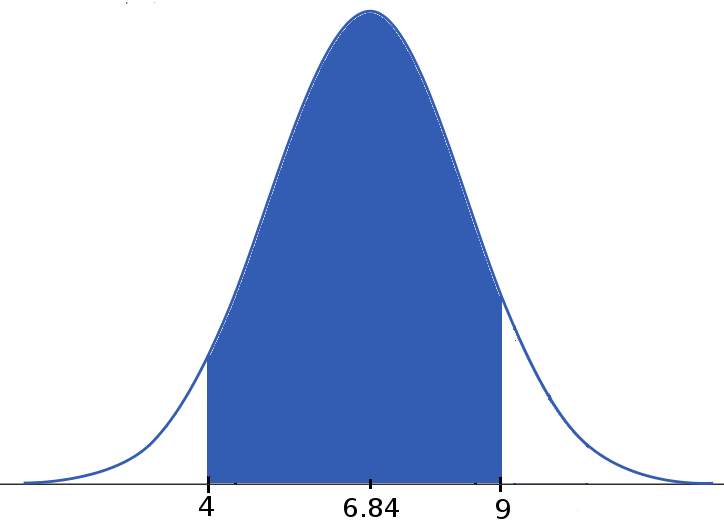
Example: Iowa Test Scores.
 | $\displaystyle \longrightarrow$ | 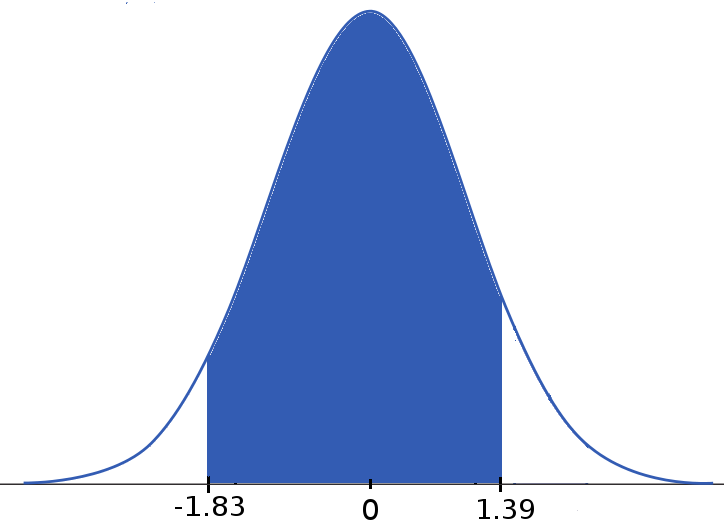 |
| Original: $N(6.84,1.55)$ | Standard Normal $N(0,1)$ |
$\mbox{Area Between 4 and 9}=\mbox{Area Below 9}-\mbox{Area Below 4}$
$=\mbox{Table}(1.39)-\mbox{Table}(-1.83)=0.9177-0.0336=0.8841.$
Interpretation: About $88.41\%$ of students scored between $4$ and $9$ on the Iowa Vocabulary Test.
OR, the probability a randomly chosen student scored between $4$ and $9$ is about $0.8841.$